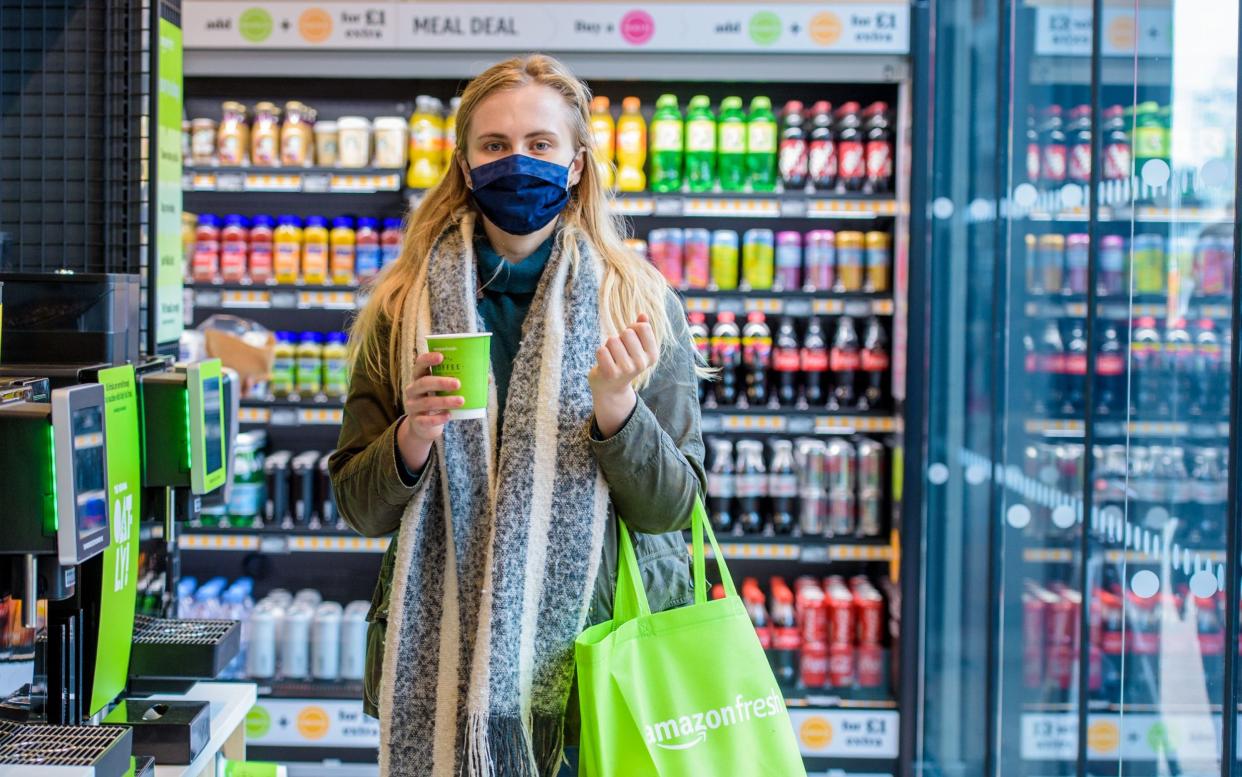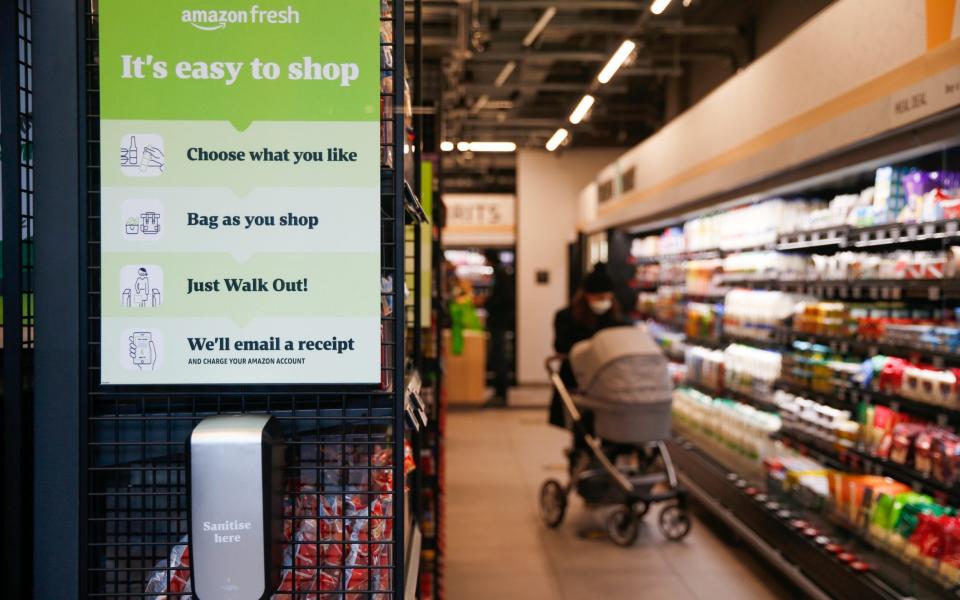What it's like to shop at Amazon Fresh, where tech replaces tills and trolleys

There is a buzz of excitement on the high street in Ealing, west London. Amazon has just opened its first grocery shop in the UK – a high-tech offering where shoppers are tracked round the store with technology that monitors what they are picking up and putting in their bags, meaning you can leave without going through the till.
Outside the doors, a tough-looking security guard watches on. Someone asks him: “Have you nicked anyone yet today?” and he laughs and says no.
His job is essentially redundant now. Instead, there is a much tougher security guy lurking behind the scenes: powerful technology that uses sensors, cameras and artificial intelligence to take incredibly accurate guesses at what we are picking up.
The Telegraph visited the store on the first day of business and tested out this new way of shopping. If you’re au fait with a smartphone, then it feels remarkably easy: simply download the Amazon app and scan a QR code on your phone when you walk into the store. From there, you put whatever you like into your bag and walk out. Amazon’s algorithm works out what you’ve left with and bills your account accordingly.

When self-checkouts first came into supermarkets, there were fears that they would lead to shoplifting, as people could tell the machine they were weighing in a pound of onions when they had a pound of pricey tropical fruit. It’s natural to feel the same about this, but on first go, it seems Amazon’s system is much harder to game.
I wander round the store, testing out the limits of the tech. I put two lemons into my bag, then deposit one on a shelf next to some pitta bread. I hover my hand over two different chocolate bars, trying to make it difficult to guess which one I’m choosing. I pick up some fancy on-the-vine tomatoes, put them down next to cheaper ones, then pick them up again.
It feels like the dawning of some new age when I check the receipt emailed to me and find the algorithm has got every single item correct: I’m charged for one lemon, the correct chocolate bar and the more expensive tomatoes.
Later, I do another quick trip around the supermarket – and what’s this? My receipt shows a stray packet of cheese and onion crisps, which I hadn’t picked up, let alone left with (I don’t like cheese and onion crisps). Maybe that security guard isn’t as redundant as I thought.
The concept has already been launched in the US as Amazon Go
Without the checkouts, there are subtle differences around the shop compared with a normal supermarket. There are no baskets or trolleys, for a start, since everything you pick up off the shelf is put straight into your bag to take home. And without the tills, there are none of the things you’d usually buy from behind them: the store doesn’t stock tobacco or lottery tickets.
There are also no magnetic security strips on bottles of wine or expensive packets of meat, which are often targets for shoplifters. In fact, Amazon probably wouldn’t mind if you furtively put a couple of fillet steaks into your bag – you’ll be charged for them, after all.
I wonder what this all means for supermarket staff. Amazon insists that the store still creates jobs – there are people stocking shelves and putting the croissants in the oven – but it’s likely there will be fewer workers here than in an ordinary supermarket of its size.
Privacy campaigners are not thrilled by the new store, which mirrors the three dozen that Amazon has already launched in the US. “It offers a dystopian, total-surveillance shopping experience”, says Silkie Carlo of campaign group Big Brother Watch. “Amazon’s intense tracking of shoppers will create larger personal data footprints than any other retailer. Customers deserve to know how and by whom these records and analytics could be used.”

I myself feel a tug of uneasiness when I put a bottle of wine into my bag, and walk out of the shop without being asked for ID ⎼ something I’m regularly asked for in ordinary supermarkets with “challenge 25” policies. But what would be the point of asking for ID? Amazon knows who I am: it knows I’m old enough to buy a bottle of plonk.
The customers I speak to seem more excited than concerned.
Harvey Duncan, 24, who uses a wheelchair, points out that tills in ordinary supermarkets make his shopping experience difficult. “It’s so much easier for me,” he says. “I can just go in and out.”
Eva Krygier, 71, shows me the ready meal she’s bought for dinner tonight on a trip out with her friend Vanda Hingle, 68. The Amazon technology worked perfectly for her, she says, except for one thing.
“I couldn’t log onto the app because I couldn’t remember the password,” she says, laughing. “Vanda had to get this all for me.”

